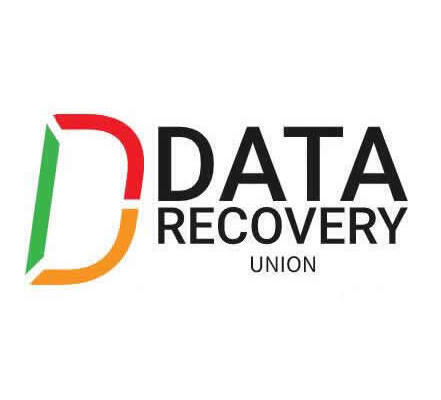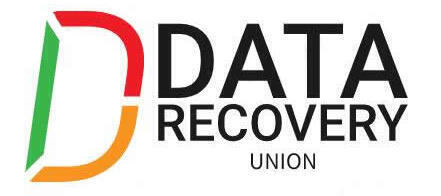When To Use Data Recovery Freeware?
Data recovery freeware is an excellent idea to try in a few very specific circumstances. There are no guarantees with any commercial data recovery programs, freeware or not, however. The circumstances under which the use of freeware might be a good idea would include:
• When loss is due to human error or virus. Freeware is generally very adept at restoring files that have been accidentally deleted or damaged during a virus outbreak on a machine. Be very certain that the problem is a result of this type of issue before using, however.
• When money is at a premium. Data recovery freeware costs users nothing to try. If a good program is selected, it can have very good results and save a wallet a great deal of potential pain.
When To Avoid Using Data Recovery Freeware?
Data recovery freeware is not always the advised route to take to restore lost or damaged files. There are three particular scenarios where it can be beneficial to seek out different options. They are:
• When hardware failure is suspected. Freeware is generally designed to address software-based problems. If a mechanical crash is to blame, another route is typically advised.
• If installation is required to run the program. Good freeware recovery programs will run off the Internet or a floppy. The process of installing a program might damage all chances of recovering lost information.
• If the maker is unknown. Make sure to select data recovery freeware that is highly recommended by others. Check on computer user boards and other similar outlets before selecting a program.
Why Consider Freeware At All?
Data recovery freeware is an excellent option under the right circumstances. If files are lost due to accidental deletion or because of programming issues, these programs can work wonders. With some paid programs and professional services costing a great deal of money, many people find freeware is the best place to start. Many people start here and then work up to paid-for options if the effort doesn’t pay off with a recovery.
Which Data Recovery Freeware To Use?
The best place to look for data recovery freeware is on the Internet. A simple search should net some results. If higher recommendations are desired, try checking out computer troubleshooting web sites, message boards and other similar locations.
Data recovery freeware can provide the perfect solution to fix damaged or lost files. It does pay to tread lightly when considering this option. Sometimes the cheapest or even free option may not be the recommended route to take.
Helpful tips for using data recovery freeware
1. If your drive is making strange noises or reports a CRC read IO error, DO NOT PROCEED. This indicates a hardware failure so your data is not going to be recoverable using “undelete” style data recovery software.
2. As soon as you realize your data has been deleted, stop using the computer! The less activity the better to avoid dangerous disk-swap activity.
3. Find and download data recovery software on another computer.
4. Save the recovery tool to a flash drive and run it directly from there.
5. Save the extracted data back onto the flash drive for added safety.
Data Recovery Freeware:
1. GParted Live CD aims to be fast, small in size (~50mb), and use minimal resources to get that disk partitioned the way you want it. GParted Live CD is based on Gentoo-catalyst, and uses Xorg, the lightweight Fluxbox window manager, and the latest 2.6 Linux Kernel. The CD also offers the following programs: parted and fdisk vi, ntfs-3g, partimage, testdisk, Terminal and Midnight Commander. GParted is written in C++ and uses gtkmm for its Graphical User Interface (GUI). The general approach is to keep the Graphical User Interface as simple as possible.
URL:http://gparted-livecd.tuxfamily.org/
2. KNOPPIX is a bootable CD with a collection of GNU/Linux software, automatic hardware detection, and support for many graphics cards, sound cards, SCSI and USB devices and other peripherals. It can be used as a Linux demo, educational CD, rescue system, or adapted and used as a platform for commercial software product demos. It is not necessary to install anything on a hard disk. Due to on-the-fly decompression, the CD can have up to 2 GB of executable software installed on it.
URL: http://www.knoppix.net/
3. The Ultimate Boot CD will be of great help if you want to run floppy-based diagnostic tools from CDROM drives, consolidate as many diagnostic tools as possible into one bootable CD. Avoid digging into the dusty box to look for the right floppy disk, but simply run them all from a single CD.
URL: http://www.ultimatebootcd.com/
4. Undelete Plus is a quick and effective way to retrieve accidentally deleted files, files removed from the Recycle Bin, in a DOS window, from a network drive, from Windows Explorer with the SHIFT key held down.It works under Win 95/98/Me/NT/2000/XP/2003/Vista operating systems. The program supports all Windows file systems for hard and floppy drives.
URL:http://www.undelete-plus.com/
5. The Magical Jelly Bean Key Finder is a freeware utility that retrieves your Product Key (cd key) used to install windows from your registry. It has the options to copy the key to clipboard, save it to a text file, or print it for safekeeping. It works on Windows 95, 98, ME, NT4, 2000, XP, Server 2003, Windows Vista, Office 97, Office XP, and Office 2003.
URL:http://magicaljellybean.com/keyfinder/
6. Ghost for Linux is a hard disk and partition imaging and cloning tool similar to Norton Ghost. The created images are optionally compressed and transferred to an FTP server instead of cloning locally.
URL: http://sourceforge.net/projects/g4l
7. USB PC Repair Kit is a list of programs. The programs are loaded onto a USB Pen Drive to help fix your computer. The Kit contains the programs that can tell you if you really need to reboot after installing a program or permanently erase sensitive data from your hard drive that may still exist after using the windows delete feature.
URL: http://www.dailycupoftech.com/usb-drive-systems/3/
8. TestDisk is a powerful free data recovery software. It was primarily designed to help recover lost partitions and/or make non-booting disks bootable again when these symptoms are caused by faulty software, certain types of viruses or human error (such as accidentally deleting your Partition Table). Partition table recovery using TestDisk is really easy.
URL: http://www.cgsecurity.org/wiki/TestDisk_Download
9. FSBackup is a shell script that automates the execution of backups using the tar archiving utility. It is designed for use by technically knowledgeable users (programmers, system administrators, or other power users), for backing up a small network or individual computers.
URL: http://www.fullspan.com/proj/fsbackup/#introduction
10. SuperDuper is a program that makes recovery painless, because it makes creating a fully bootable backup painless. Its incredibly clear, friendly interface is understandable, easy to use, and SuperDuper’s built-in scheduler makes it trivial to back up automatically. And it runs beautifully on both Intel and Power PC Macs. It is an indispensable tool, specially if your hard drive starts making that horrible clicking noise, your most important day-to-day application isn’t working with the system update you just applied, or you need to restore a stable copy of your system, but don’t want to lose what you’ve been working on, or other similar cases.
URL:http://www.shirt-pocket.com/SuperDuper/SuperDuperDescription.html
11. Corruption Corrector is a program designed for fixing corrupt files. It is for situations when you have (downloaded) many copies of the same file, but all of the copies are a bit corrupt. If the corruptions are in different parts of the file, it is possible to combine the good bytes from each file and get an uncorrupted copy of the file.
URL: http://ccorr.sourceforge.net/
12. Myrescue is a program to rescue the still-readable data from a damaged hard disk. It is similar in purpose to dd_rescue, but it tries to quickly get out of damaged areas to first handle the not yet damaged part of the disk and return later.
URL: http://myrescue.sourceforge.net/

